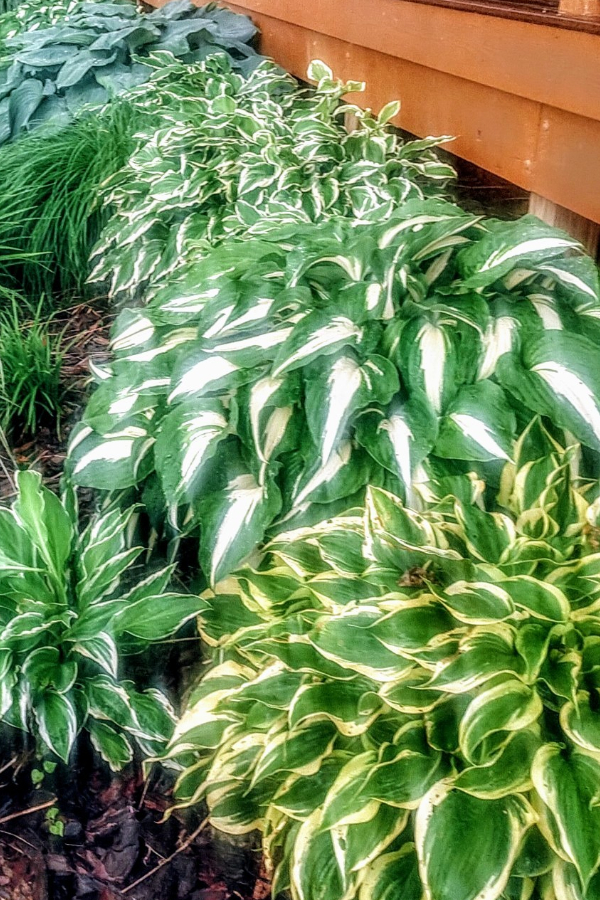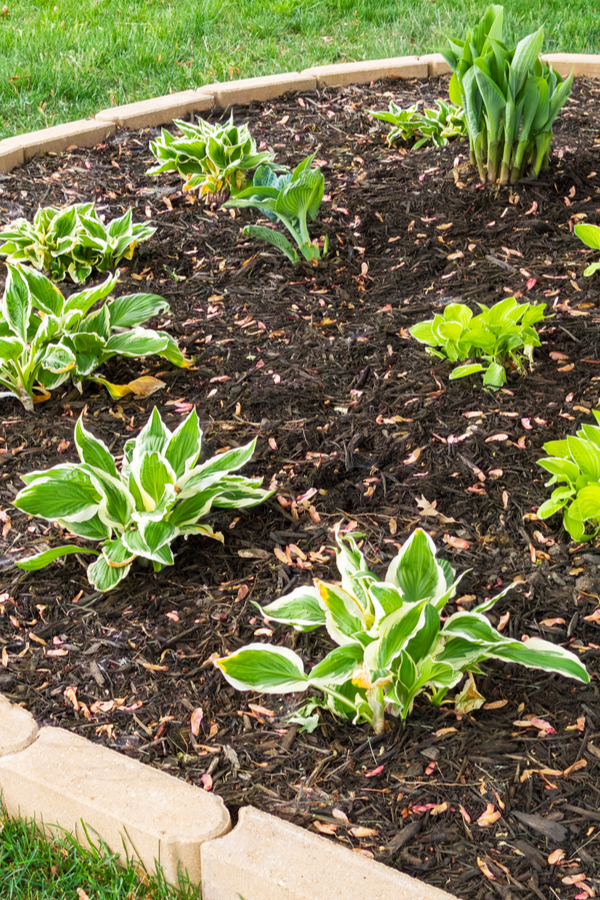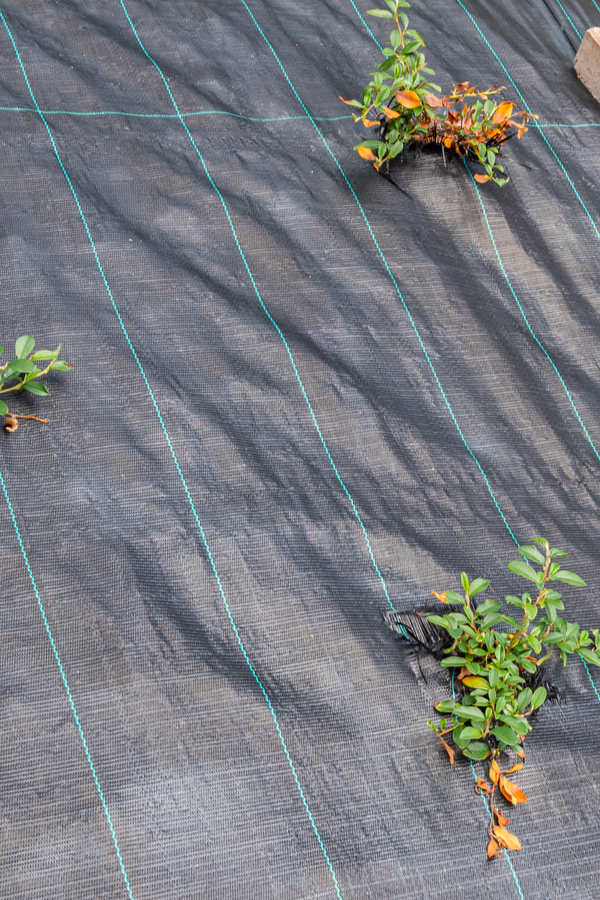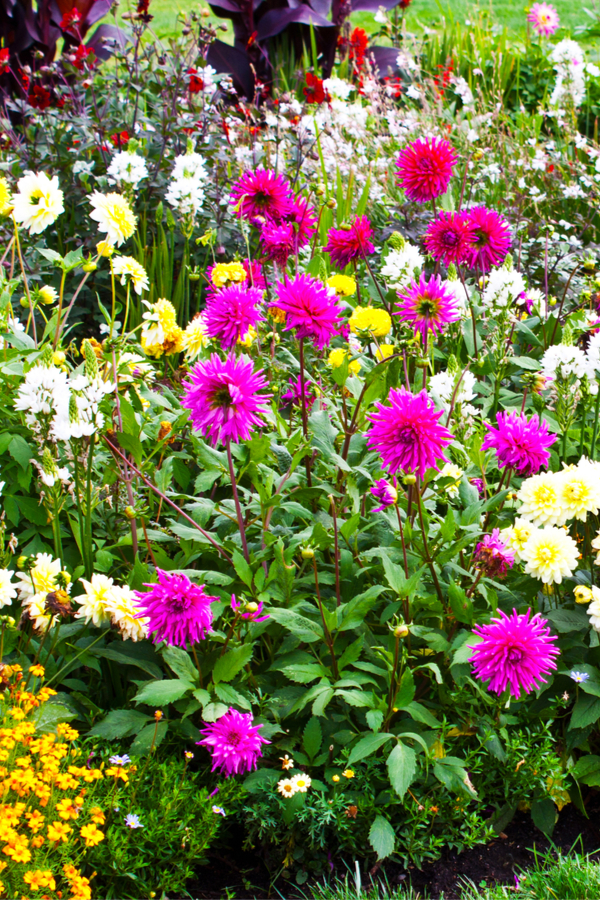How To Keep Weeds Out Of Flower Gardens
Yes, it really is possible to have weed free flowerbeds all summer long. And yes, it's also possible to have them be beautiful and neat without having to spend hour after hour weeding them!
Keeping your flowerbeds weed free can be frustrating, exhausting and overwhelming. And, it can certainly feel like a never-ending summertime chore.
The constant weeding, mulching, re-mulching, and then weeding again gets old fast. But it doesn't have to be that way.
In fact, with just 3 simple secrets, you can keep your flowerbeds beds healthy, beautiful, and virtually weed free all summer long. All by working less, and having more time to actually enjoy them!

The 3 Simple Secrets To Weed Free Flowerbeds
#1 More Plants – Less Mulch!
Although mulch is an important part of keeping beds neat and tidy, it should never be the first line of defense. Nor should it be the most visible or used material in your flowerbeds. Instead, that honor needs to go to the plants!
The number one key to keeping flowerbeds weed free is to fill your flowerbeds full of plants – not mulch. Think of it as planting a living weed-barrier.
Unfortunately, all too often, flowerbeds are filled with considerably more mulch than plants. And that is simply a recipe for disaster. All of that open space is nothing more than a lot of future weeding chores. And a costly space as well!

Instead, fill your beds with perennials, annuals, and small shrubs and bushes that grow together. By allowing plants to grow together, it eliminates wide open spaces where weeds and weed seeds can find a home.
And those dense plantings have additional benefits as well. The thick covering of foliage helps conserve moisture in the soil, which means less watering chores for you. And, healthier, more robust plants too.
But perhaps best of all, it saves enormously on purchasing mulch! And speaking of saving money, packing flowerbeds with plants doesn't have to be costly. In fact, in many cases, it can be completely free!
Filling Flowerbeds On The Cheap
All of the flowerbeds around our farm have been filled entirely from transplanting and dividing. By simply taking existing perennials and dividing them, we have created hundreds and hundreds of plants for free.
Listen Below To Our Podcast On Keeping Flowerbeds Weed Free!
Of the 1800+ plants that now fill all our flowerbeds at the farm, nearly 95% have come entirely for free. Not only has it has been a huge cost savings in plants, but also in having to purchase mulch to cover all of our bed spaces.
Both early spring and fall are great times to divide and split the perennials in your landscape. And with some plants like daylilies and hostas, you can even dig and transplant in the middle of summer. (See: How To Divide Perennials In The Summer)
But don't stop there. Swap starts of plants with friends, family and neighbors too. And whatever you do, fill those beds full of plants and flowers!
#2 The Power Of Mulch – 3 Secrets To Weed Free Flowerbeds
Now it's on to that ever so important weed stopping topic – mulch! One of the most common mistakes made when it comes to mulching flowerbeds is failing to put down enough mulch.

Placing down an inch or two of mulch around perennials, annuals and shrubs is simply not enough. It won't keep weed seeds buried in the soil below from germinating. Nor will it keep seeds that blow in from afar from finding a way down into the soil below to sprout and grow.
Mulch in flowerbeds should be kept at a minimum of depth of 4 inches. And it should be applied in a single coat to protect right from the start.
A single, thick coating will do more to prevent weeds than multiple applications throughout the year. By applying it heavier from the start, you can both suppress exiting weeds, and keep new seeds from going to the soil below.
It doesn't mean you can't add mulch later if needed, but start your beds off right with the protection they need, and your weeding chores will decrease significantly.
What About Weed Barrier Cloth?
So you might be asking, what if I use weed barrier cloth? Unfortunately, weed barrier cloth almost always ends up creating more work than not using it.
Especially in a year or two when weeds begin forming above the cloth in the decomposing mulch. In fact, once weeds begin to weave through the fabric, they can be even more difficult to get out than before!

But there are other issues with weed barrier cloth as well. It can also hinder plant growth and health over time. Although weed barrier cloth does allow moisture through, it can easily become filled with decaying matter that blocks water and nutrients from easily passing through.
Have you ever pulled up old fabric to see hard-pan soil below? That is exactly what can happen, and over time it leaves your plants hurting for both water and nutrients.
Instead, use a deep covering of a good hardwood or bark mulch that can protect your soil and allow nutrients and water to get to the roots of your plants. (See : How To Select The Best Mulch For Flowerbeds & Gardens)
#3 Don't Turn That Mulch! 3 Secrets To Weed Free Flowerbeds
Last but not least, and maybe the best advice of all – stop working so hard! In fact, the less you disturb your flowerbeds by working in them, the less weeds you will have.
Many gardeners like to stir up faded mulch every week or so to freshen up the look of their beds. Unfortunately, every time mulch is raked and turned, weed seeds are turned under towards the soil and "planted" as well.
On the surface, the seeds have little ability to germinate. But once turned under, they can easily find needed soil to sprout. And the next round of weeds begin!

In addition, don't till or excessively dig beds in the spring before planting. This only serves to plant more weeds too. Instead, create planting holes that are only the size needed, and leave the rest of the soil undisturbed.
Finally, walk your flowerbeds every day or two to stay on top of them. It is quite easy to pull a small weed seedling here and there on a 5 minute walk around your beds. But let those weeds go for a week or two, and it becomes a ten or twenty fold problem!
Here is to planting more and working less, and having weed free flowerbeds all summer long! Happy Gardening – Jim and Mary.
How To Keep Weeds Out Of Flower Gardens
Source: https://oldworldgardenfarms.com/2021/05/09/weed-free-flowerbeds/
Posted by: guerrabetion.blogspot.com

0 Response to "How To Keep Weeds Out Of Flower Gardens"
Post a Comment